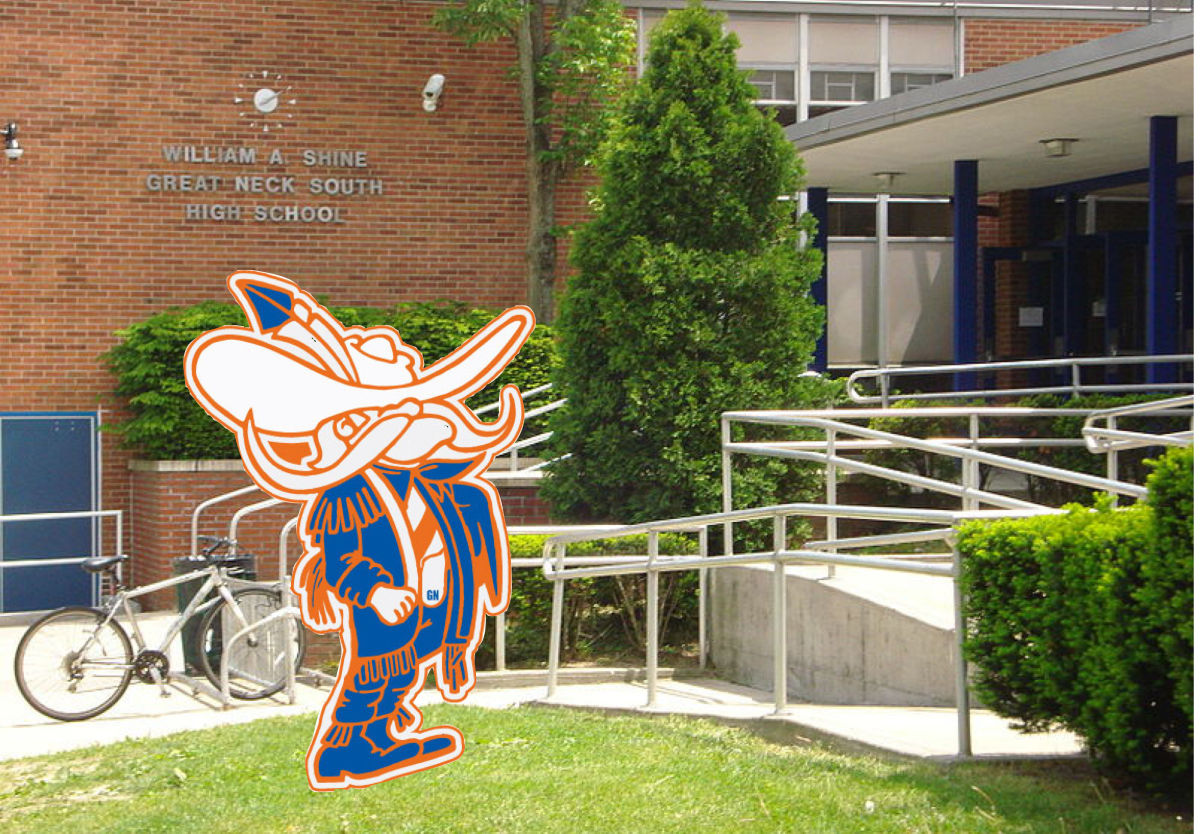Though Great Neck South High School sits far from the American South, some alumni can still remember when the school’s logo was a symbol one doesn’t often see above the Mason-Dixon line – the Confederate battle flag.
After calls to remove the Confederate flag from near the South Carolina State House in Charleston, S.C. in the wake of the killing of nine people at Emanuel AME Church two weeks ago during a Bible study class, many graduates remembered last week when they helped change the Great Neck South High School Rebels’ symbol from that of a Confederate soldier to a Revolutionary War patriot.
In a series of posts to the William A. Shine Great Neck South High School Facebook page, David Gurfein, Class of 1983, said that when South High was opened in 1958, their teams were named the Rebels to differentiate them from Great Neck North High School.
Keeping with the “Southern secession” theme, a Confederate soldier and a Confederate battle flag was made their mascot and symbol.
Gurfein, captain and quarterback for South High’s football team, said in the posts he wore the Confederate flag himself, seeing it more as a symbol to unify the team and fans, rather than a symbol of racial hatred.
“No one, I am aware of, associated any hate with the symbol,” Gurfein wrote in the post. “As a matter of fact, a black woman, the Mother of one of my closest friends, would sew Confederate flag patches on our football jerseys.”
The history of the Confederate flag became a subject of intense discussion following the shooting deaths at the Emanuel AME Church, which has played an important role in the Civil Rights and Black Lives Matter movements.
Images of the suspect in the shooting, Dylann Roof, show him wearing symbols sometimes worn by white supremacists, such as the flag of apartheid-era South Africa. Some photos picture him holding a Confederate flag as well.
Gurgein said in the post that he continued to wear the flag until his junior year, when he saw a photo in the New York Times of a Ku Klux Klan member dressed in paramilitary clothing and standing in front of a Confederate flag. His father then talked to him about the history of the Confederate flag.
“I recollect it being the first time I had ever seen these hate filled Klansman together with my beloved flag and it was the first time I made the conscious association between the Confederate battle flag and racism,” Gurfein wrote. “I suddenly knew the truth associated with that flag, not what we innocently and naively wanted it to represent, but what it truly represented. There was no turning back.”
Gurfein wrote that he met with then school principal Gil Blum about changing the school’s mascot and symbol. Blum said the change would probably never happen, Gurgerin said.
Blum, he said, had tried to change the symbol for years but the students wouldn’t support it.
Gurfein said he promised that his class would make the change.
He said spent a lot of time with his classmates designing a new logo for the school, he wrote.
After he received input from other students, Gurfein said, he designed a new logo, which featured a Revolutionary War soldier in front of a Spirit of ’76 American flag. He said in the post the school embraced the change, and that he was given permission to redesign the cover of the school’s handbook and calendar with the Revolutionary War theme.
He was also given permission in 1982 to have a mural painted in front of the school office.
“That year, our Football Team, a team which consisted of students who were Black, White, Hispanic, Asian, American Indian, Jewish, Catholic, Protestant, etc… became the first undefeated, Division Championship team, the school ever had,” Gurfein wrote. “The mural remains standing…33 years after it was painted… and the students of Great Neck South continue to embrace the spirit of the Revolutionary Rebel.”



